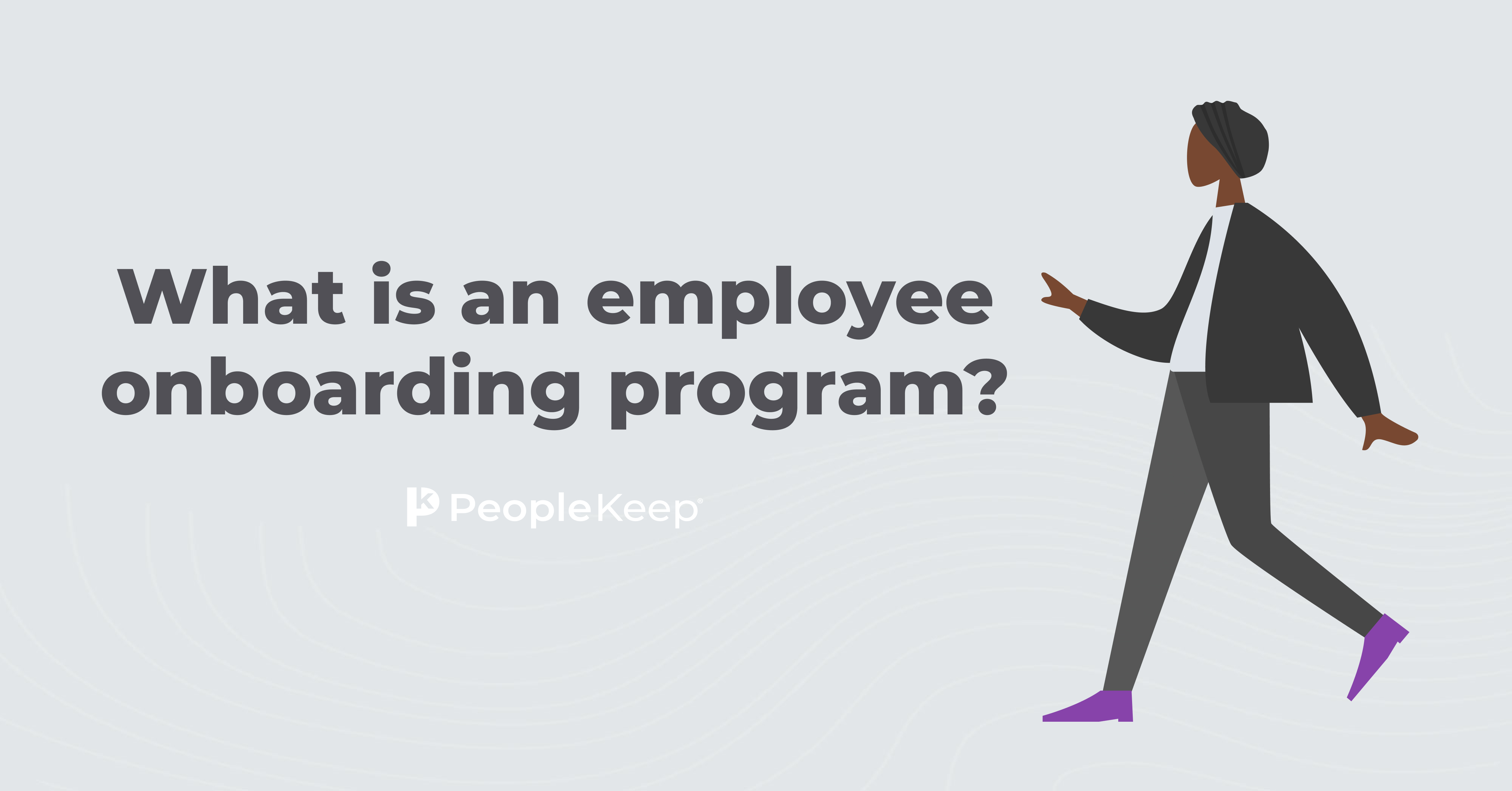Keeping an open line of communication with your employees
By Holly Bengfort on September 3, 2024 at 7:46 AM
Have you ever wondered why some workplaces thrive while others struggle? The secret often lies in the strength of communication.
As an employer or business owner, your communication efforts are key to running a successful organization. This is true whether you're discussing job duties, explaining HR policies, or outlining a benefits package.
In this article, we'll provide eight tips business leaders can use to maintain authentic communication with their employees.
In this blog post, you'll learn the following:
- How to avoid poor communication in the workplace.
- The different communication channels and tools you can use to reach every employee.
- How open communication in company culture can improve employee engagement, productivity, and retention.
Open communication vs. closed communication
Open communication occurs when team members at every level of an organization feel they can openly express their thoughts and ideas. This form of communication empowers employees to share their opinions without fear of repercussions in the workplace. Employees who experience open communication feel more valued and appreciated by their employer.
By contrast, closed communication is when one person runs the show without any back-and-forth from others. The main goal of closed communication is to relay information rather than gather input or feedback from employees.
Why are effective communication methods important?
Bad communication is bad for business. A lack of clarity can lead to misunderstandings and mixed signals. Plus, employees don't like to feel left in the dark. They want to share their thoughts, ideas, and feedback with someone who's willing to listen.
Happy employees feel valued by their employers. Embracing honest communication with your workers can profoundly affect company culture and success. The American Society of Association Executives1 found that 92% of highly engaged workers feel listened to in the workplace. In contrast, only 30% of highly disengaged workers felt listened to.
Open lines of communication can encourage the following:
- Higher quality work
- An understanding of essential policies
- Stronger relationships between employees and company leaders
When your employees understand your organization’s common goals, they're more likely to do their part to achieve them. In addition, an open-door environment can even promote employee retention, helping business leaders save thousands of dollars on recruitment costs.
Eight tips for maintaining consistent communication with employees
Your business's success largely depends on the success of your communication strategy. Let's review some tips for creating better systems of communication.
1. Enact an open-door policy
One way to foster communication is to enact an open-door policy. This creates a culture where employees are comfortable going to management for questions and support. However, this only works if the employer truly welcomes it. If not, employees can generally tell if an "open door" is for show.
An open-door policy should also allow and encourage employees to provide candid feedback. This helps you keep an eye on potential concerns so you can tackle those issues before they grow.
2. Encourage feedback
You can't have open communication without welcoming employee feedback. Workers should feel comfortable providing unprompted feedback. Business leaders should also ask their employees for feedback directly. This is vital when implementing a new program or policy within your company.
Lily Wang, the HR Director at Relyir2, focused on fostering a culture that promotes open communication by seeking employee feedback.
"One step I took was implementing regular 'town hall' meetings, where employees from all levels have the opportunity to voice ideas and concerns," Wang said. "Additionally, we launched a digital 'suggestion box,' making it easier for employees to contribute their insights and feedback anytime and from anywhere."
You can also gather direct feedback or anonymous feedback through employee surveys. Ask your employees specific questions. Be sure they understand all the messages you deliver and address any concerns they may have. You can use their constructive feedback to improve future strategies.
When it comes to effective communication, Wang says it's important for employers to listen more than they speak. They should also lead by example.
"Another crucial aspect is transparency," Wang said. "Keep your employees informed about the company's strategies and challenges. This not only engages them but also fosters a sense of ownership and unity."
There may also be times when you receive feedback that doesn't make sense to act on. If this is the case, be honest with your employees. Tell them why you didn’t implement the feedback so they don't feel ignored.
You also need consistent feedback to create a great team culture. By normalizing feedback in your company culture, your teams can start to improve together and uplift the entire organization. An open culture that values and seeks feedback will eliminate toxic behaviors and boost employee morale.
3. Establish ground rules
Different employees have different communication styles. Depending on the information you want to communicate, you may choose to take a different approach with each employee. Or, you may apply the same process to everyone.
Regardless of how and when communication happens, it's important to establish expectations at the start with communication channels. Determine whether there will be regular meetings such as daily check-ins, weekly one-on-one meetings, or annual reviews with individual employees and your leadership team. Once you have a communication plan, ensure everyone knows the expectations.
4. Ensure confidentiality
Helping employees with issues like personal concerns, employee benefits, and HR policies and procedures requires a great deal of trust between business leaders and employees. It's vital to show sensitivity to what your employees are going through while validating their concerns. Making employees feel safe and comfortable about coming to you with any concerns they have is essential for fostering a relationship of honesty and trust.
5. Use the right employee communication tools
Email and messaging apps like Slack make it easy to circulate information quickly through your company. Employees will instantly see your message notification when they're online. And, they can reply directly to your message with any questions or comments.
If your organization is partially or fully remote, communication tools are especially important to ensure remote workers feel included.
However, messaging tools aren't without their shortcomings. It can be challenging to know if employees have read a message, as they can quickly get buried if your company is active on the platform. If there’s something important to communicate to employees, scheduling a meeting or video call may be best.
6. Be direct
People tend to appreciate when you're direct with them. That said, don't beat around the bush or try to sugarcoat things when you have to deliver bad news to your employees. Speak the truth, maintain eye contact, and listen with empathy. Your employees will respect your honesty, even if they don't agree with your message. This is vital in fostering open communication and strong relationships based on trust and understanding.
7. Promote brainstorming
One of the best ways to promote better business communication is to create a culture that encourages employees to brainstorm and contribute ideas. This creates engagement and increases participation, helping make employees feel valued.
The sharing of ideas and solutions also helps ensure organizational success and growth. To foster this environment, you'll need to recognize employees for sharing their thoughts and ideas. A spot bonus can help when you want to reward someone for particularly exceptional work. You can also establish set times for the team to brainstorm new ideas and initiatives. For example, this could be monthly or quarterly.
8. Be open about employee benefits
Being open about employee benefits and compensation is essential. It helps ensure compliance with fair labor standards and diversity obligations. It also helps employees feel appreciated and trusted. However, it can be challenging and uncomfortable for many employees and managers.
Information about your benefits package should be available to your employees. That way, you can ensure they know how to use them. After all, the more employees you have using your benefits, the more value you'll receive as an organization. This is because benefits can boost morale, engagement, and productivity.
For example, if you offer a health reimbursement arrangement (HRA) to your employees, you'll need to ensure that your employees know how to submit their expenses for reimbursement. Thankfully, HRA administration software solutions like PeopleKeep can help with this.
Being open about benefits doesn't necessarily mean that you need to tell your employees how much their co-workers make.
Instead, be clear about:
- How employees can earn raises
- Who gets bonuses and commissions
- Whether certain benefits and stock options are available
This can go a long way in making employees feel informed.
You'll also want to be clear about why an employee didn't receive a raise or promotion by directly discussing the situation with them. That way, they can work toward their goals or have a better idea of when they might be able to have this conversation again.
Conclusion
Keeping an open line of communication with your employees is essential for building trust, boosting employee satisfaction, and enhancing productivity. From regular check-ins to transparent feedback systems, the strategies you implement can make all the difference in creating a supportive work environment.
Another way small businesses can improve retention is by offering the right employee benefits. PeopleKeep can help you offer an affordable and flexible health benefit. Learn more about our small business solutions.
This blog article was originally published on October 15, 2014. It was last updated on September 3, 2024.
Check out more resources
See these related articles

What is an employee onboarding program?
Want to make sure your new employees feel welcomed and prepared for their new roles? Learn about the importance of an effective employee onboarding program.

How to boost your benefits package
Boost employee satisfaction by offering a competitive benefits package. Learn how to create an attractive package that meets the needs of your employees.

What are employee benefits?
Learn what employee benefits are and why they matter. Explore different types of benefits that support employee well-being and job satisfaction.



